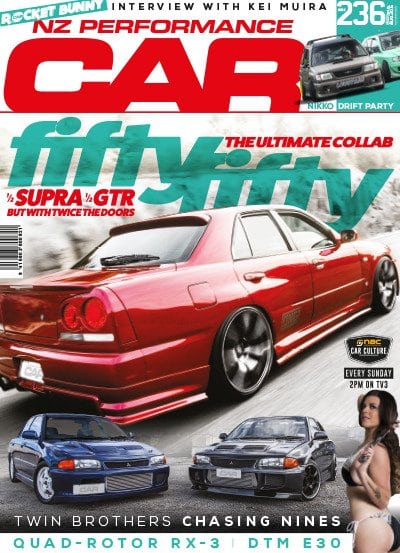An icon of icons, the E30 M3 touring car is one of the all-time greats — and we’re lucky here in New Zealand that, on any given weekend, we can still watch dream machines like Conrad Timms’ beautifully restored ’92 DTM works machine racing door to door.
Icon. Think about that word for a second. Not many nouns have the ability to describe an entity, be it living or inanimate, while imparting quite the same gravity. With a mere utterance, any subject is transformed from the mortal to the immortal, the mundane to the unforgettably outstanding.
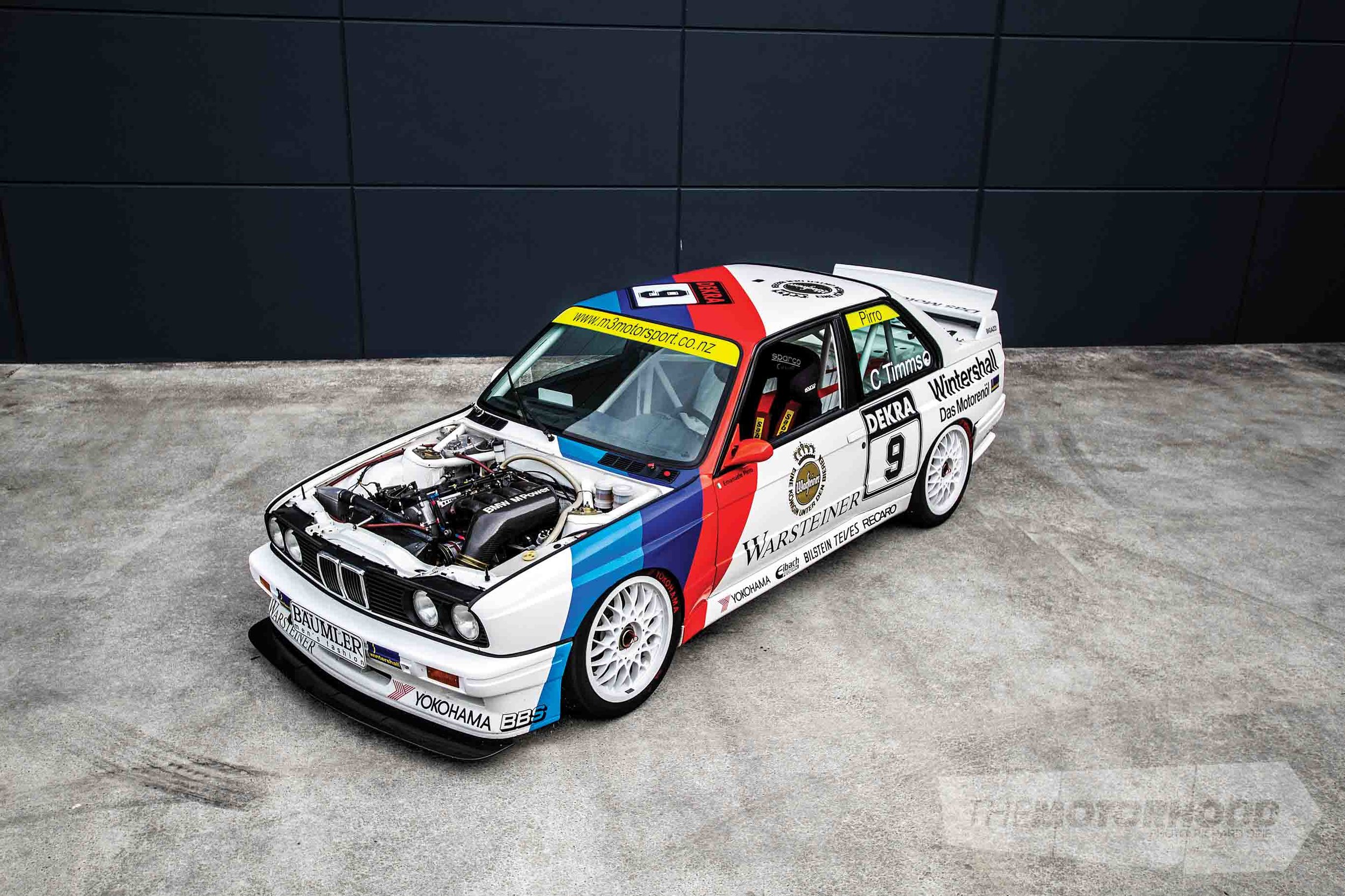
Within the constraints of automotive — particularly motor sport — culture, it’s a term that picks out the greatest from among the greats. Marques like Porsche, Ferrari, and Nissan litter the ranks of brands that have designed iconic four-wheeled masterpieces, denoted by names of equal significance — 911 GT3, F40, and Skyline GT-R — concise yet physically proven symbols of excellence and achievement above their peers.
Born of a need to compete at a world-beating level, a car with a slightly shorter moniker lurks among that elite crop of production machinery that qualifies as iconic, identified by just one letter and one number: M3.
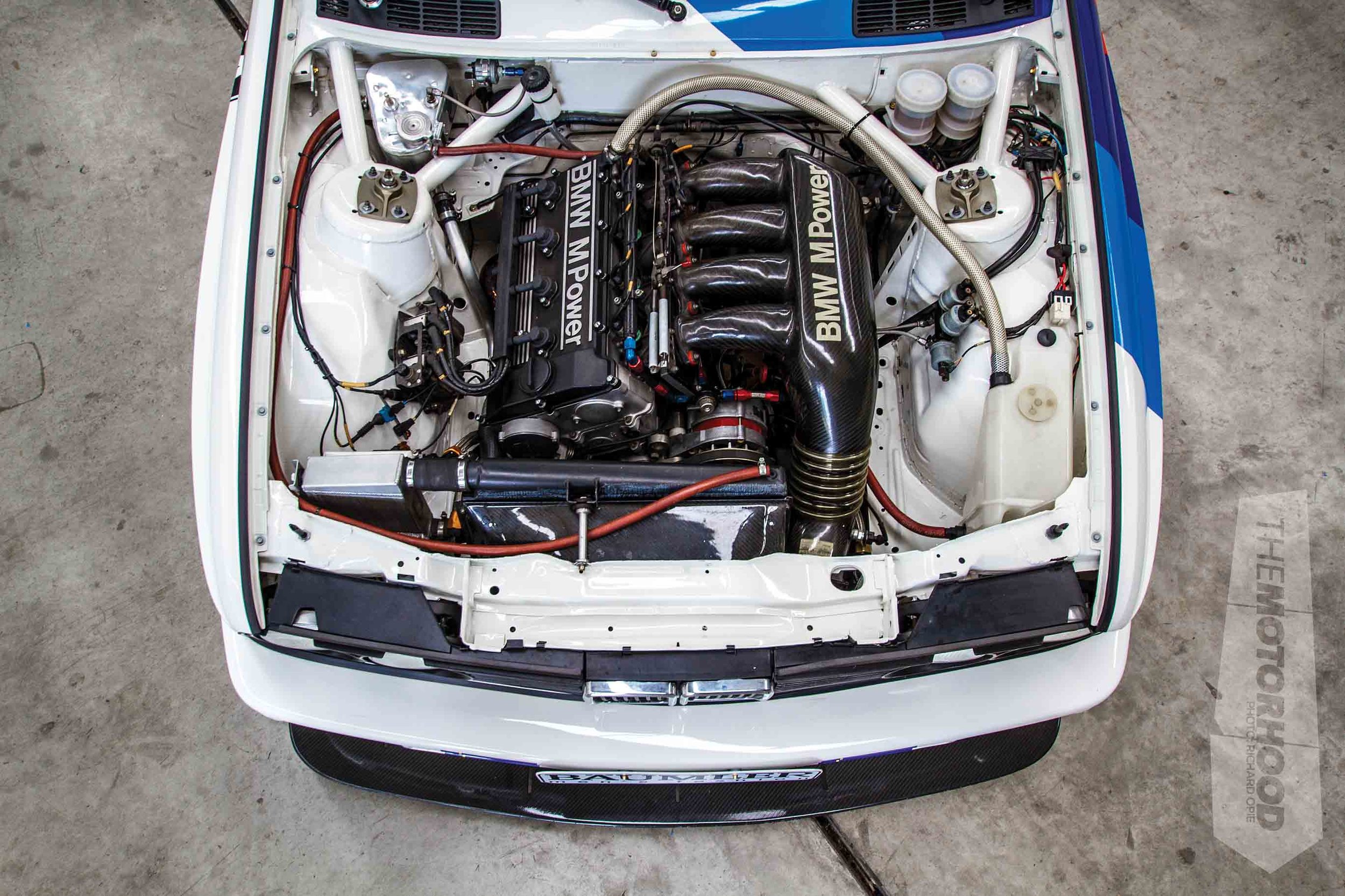
Although the badge has spanned a number of generations of BMW’s flagship mid-sized sports sedan, the E30 chassis with which the company’s M-Division kick-started the legend in 1986 still stands as the most instantly recognizable and innately ‘BMW’ of the five incarnations produced to date.
The E30 M3 came about through the need to homologate a car to compete in the FIA’s Group A category of the time — essentially, a production-car-based formula aimed at increasing manufacturer involvement with motorsport, both in Group A rallying and touring-car racing, and one that spawned manufacturer showroom specials and two distinct competition arenas in which BMW managed to achieve extensive success with the M3.
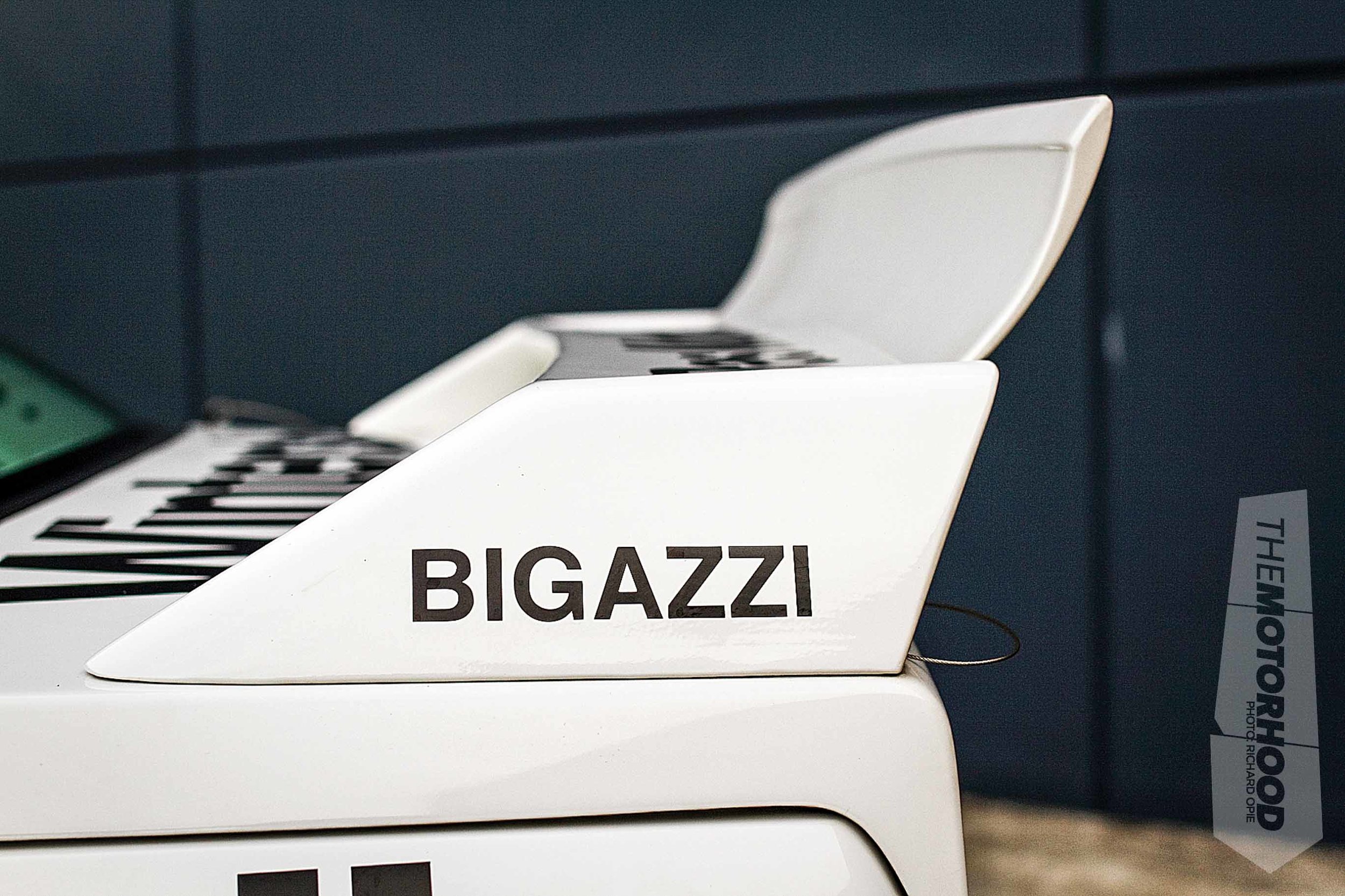
While, at first glance, the M3 was reminiscent of a common-or-garden-variety E30 two-door sedan, the clever engineers of Munich had effected a number of bespoke alterations to create the car — most notably from the outside, the aggressive silhouette formed by a deeper front air dam; those oh-so-’80s boxed wheel arches; and, of course, an angular rear spoiler, aft of the shallower angled C-pillar, which comprised one of the 12 unique body panels that set the M3 apart from its pedestrian siblings.
Beneath the bonnet, a 2.3-litre DOHC four-cylinder producing 143kW — the S14 — although, later evolutions of the car saw capacity increase to 2.5 litres and power rise, ultimately, to 175kW — figures not too shabby for a naturally aspirated production car of the late 1980s through to early 1990s.
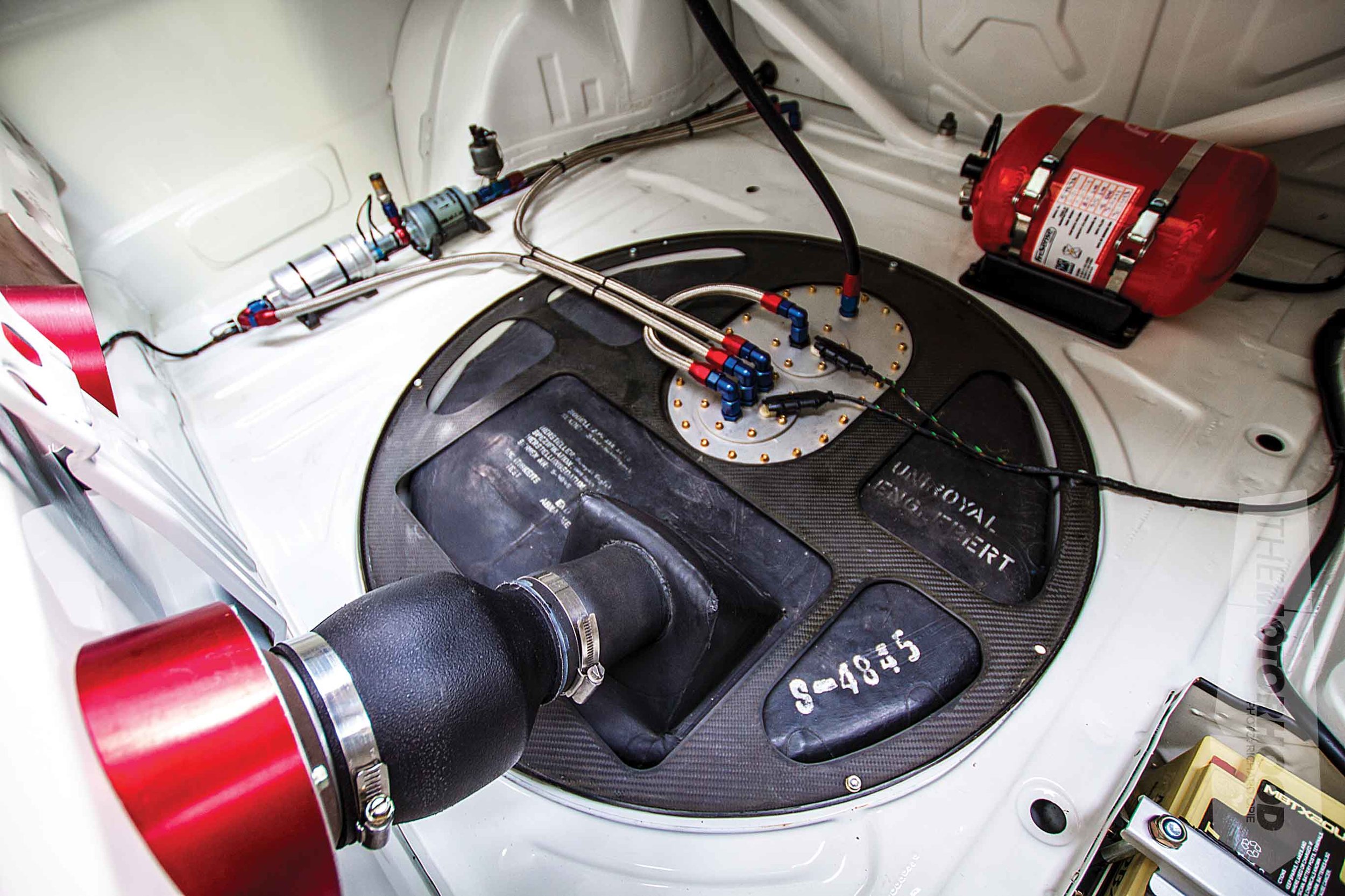
Regardless of how good the production version of the M3 was, though, it was the track that truly forged the legendary status of BMW’s pocket rocket. Despite opposition from the rapid turbo Ford Sierra Cosworth RS500s, the M3 achieved a remarkable level of success in the Australian Touring Car Championship (ATCC) and Deutsche Tourenwagen Meisterschaft (DTM), and, of course, it was a formidable force on the streets of Wellington for the fabled street race held on the waterfront.
This was the catalyst for Auckland race-car fabricator Conrad Timms to realize a dream and enter the world of historic touring-car ownership, first constructing a replica of the European Bastos-liveried Group A cars — later exchanged for ownership of the example on the pages here, a genuine works-built 1992 DTM E30 M3, the final evolution of the period race machine and, arguably, one of the most impressive.
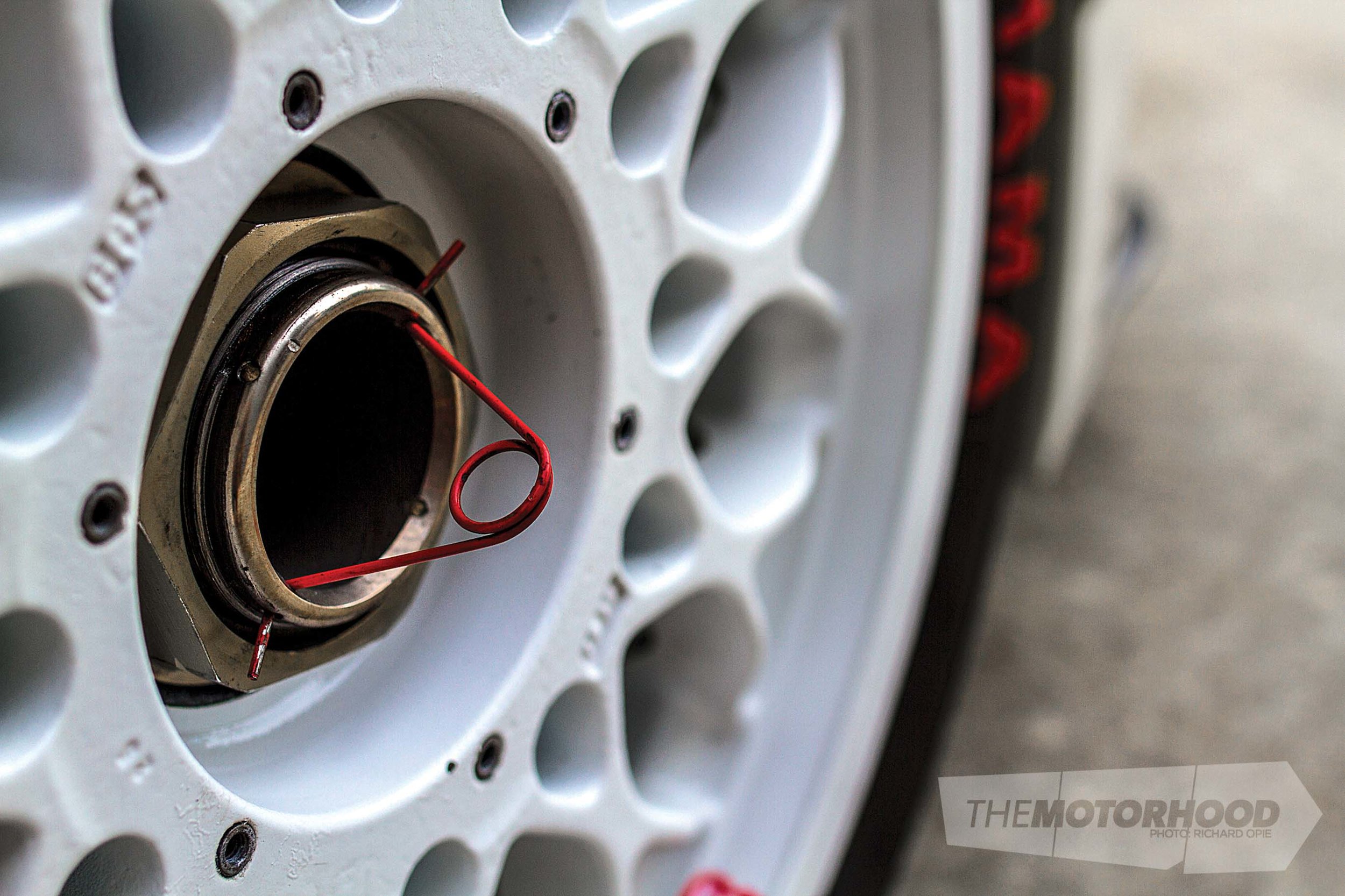
Acquired in September 2009, Conrad’s M3 started life much as all good retro rebuilds do — essentially, as a basket case, “basically, a shell with suspension and wheels”. While the M3 lacked an engine and gearbox, all the rest of the good parts were there, and, although little was known about the car’s history from 1992, it was clear that it was indeed a ’92-spec example of a ‘proper’ race-prepared M3.
It was known that, for 1993, Conrad’s BMW ran in the Diet Coke colours of Paul Morris, contesting the ATCC for that year, and that it was subsequently fitted with a 2.0-litre power plant for the Australian Super Touring Championship in 1994, before it was eventually mothballed.
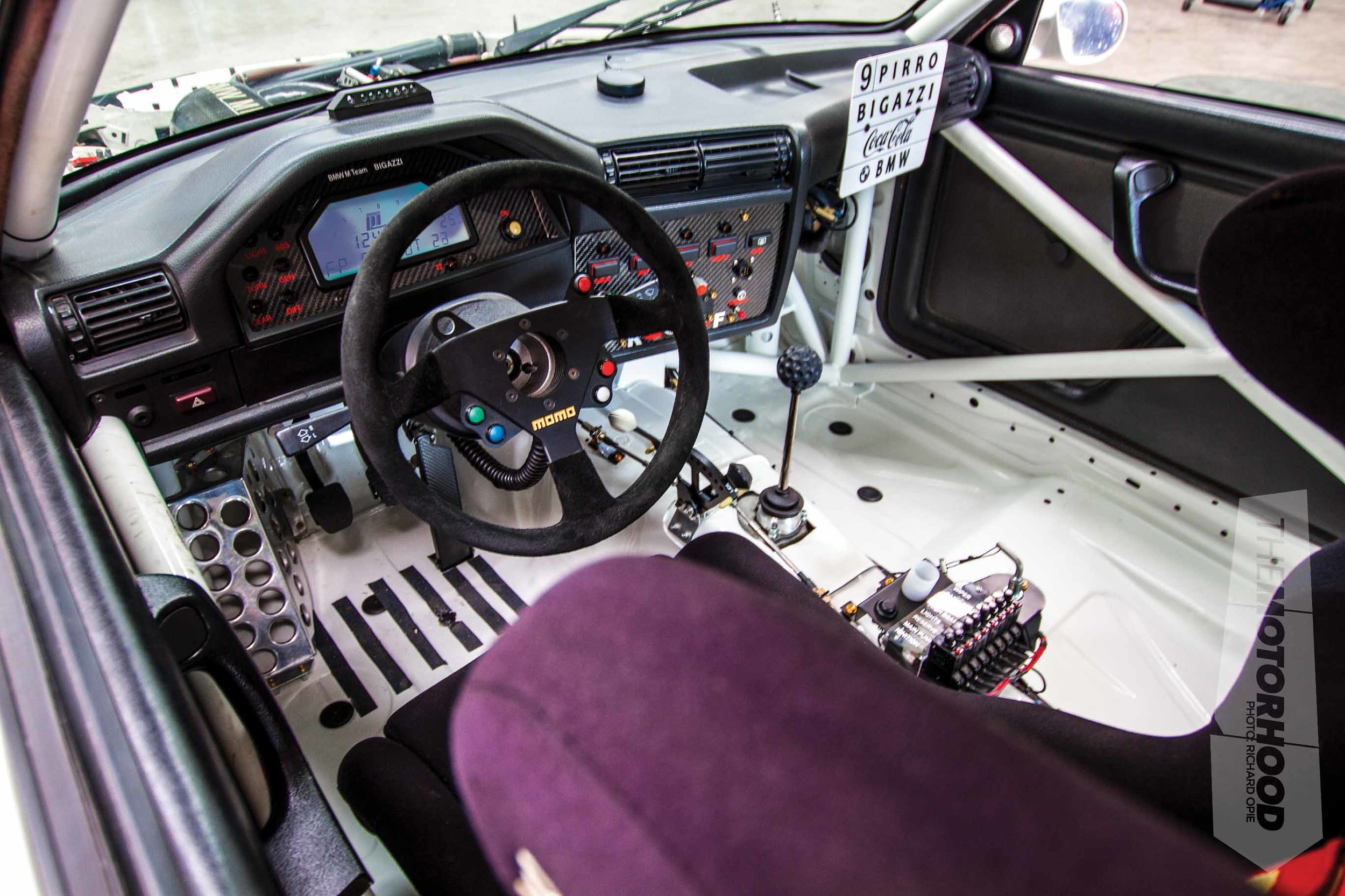
Conrad was not particularly taken with the Diet Coke livery, and his original intention was to restore the M3 as a replica of the 1992 works DTM car, driven by Italian tin-top specialist Emanuele Pirro, an example Conrad took a shine to while visiting the House of Motor Sport at the BMW Museum — and a chance discovery during the latter stages of the restoration in 2011 sealed the deal. Out of the blue, a contact in Germany got in touch, claiming that he had in his possession the original European logbook matching the chassis number of Conrad’s near-complete DTM E30.
International couriers set about whirling the valuable documentation across the world, and, in an ironic twist, it was proven that not only was the ’92 Pirro car sitting sparkling in BMW’s own museum not the genuine article but also the half-finished, painstaking restoration perched on stands in Conrad’s workshop was in fact the car that Pirro himself had punted around the circuits of Germany throughout 1992.
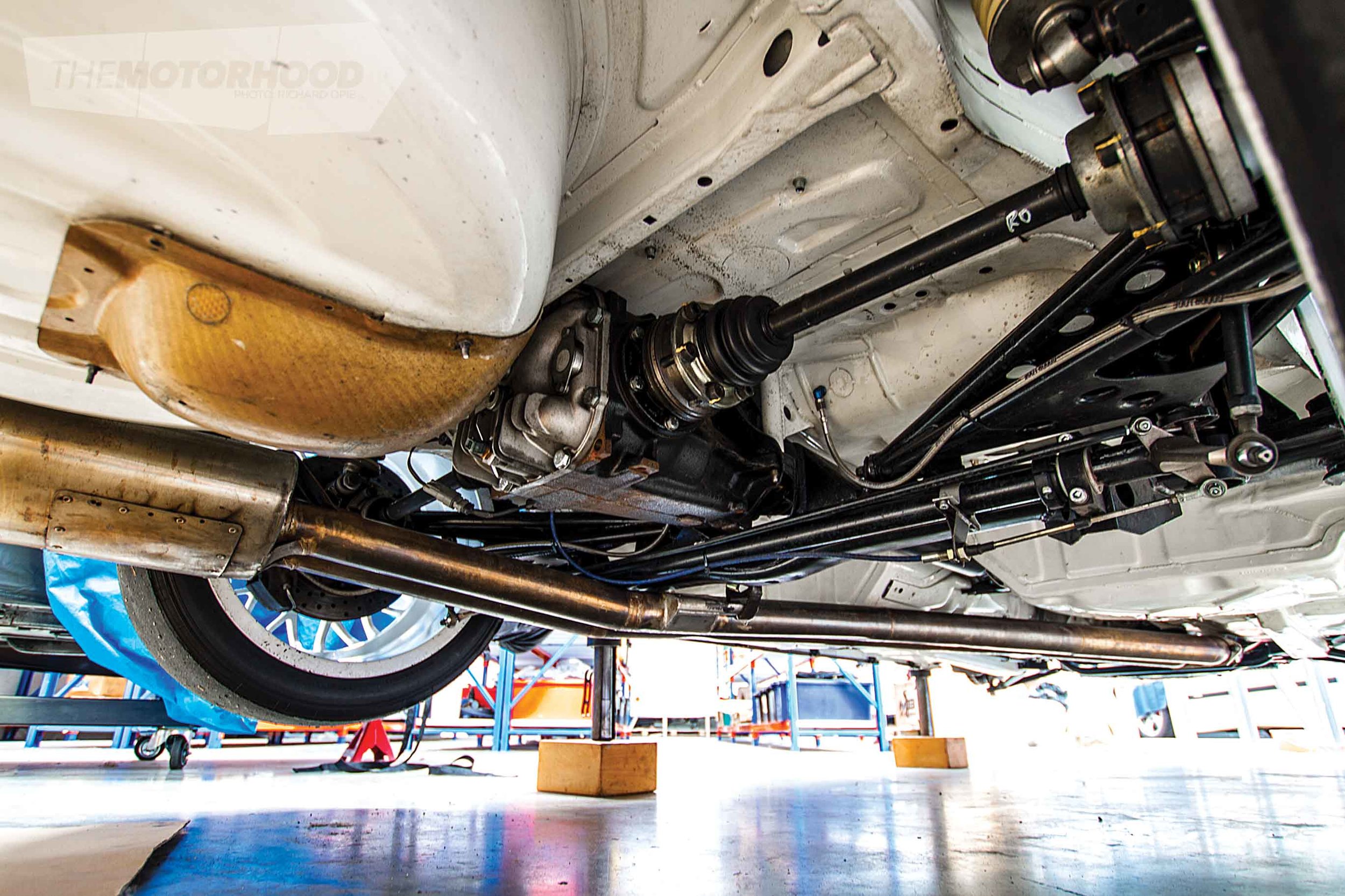
His M3 still retains one of the engines it ran in period, tracked down by Conrad and shipped from England, then mated to a Holinger H6S H-pattern six-speed dogbox also of the era. In DTM specification, the modifications allowed were slightly more liberal than those of the pure Group A touring cars — Conrad’s 2.5 variant of the S14 four-cylinder pumps out a prodigious 265kW (355hp) at 9200rpm breathing through the works-issue carbon-fibre plenum and quartet of slide throttles, these particular instruments endowing the M3 with the trademark induction howl as it moves through the gears en route to the next apex — the natural environment of the nimble E30 chassis.
Beneath the aggressive boxed arches, the DTM E30 uses an arsenal of Bilstein coilover suspension and AP Racing brakes — four-pot calipers and 304mm rotors in the rear, with six-pot calipers grasping massive 356mm front rotors up front, all contained within Yokohama slick-shod 18×9-inch BBS magnesium centre-lock wheels. Roll-bar stiffness is adjustable from the cabin, which, in typical touring-car fashion, is devoid of anything non-functional — the factory dashboard shell houses the Pi Omega digital dash display, with tactile items taken care of by a Momo suede wheel, and a Sparco FIA bucket seat framed by the comprehensive roll cage.

Other missing components — clips, brackets, reservoirs, and additional hard-to-find parts — required fabrication in-house, a talent Conrad has ultimately turned into a profitable exercise, with his business — M3 Motorsports — specializing in the manufacture of Group A / DTM E30 parts, including rear trailing arms, centre-ock hubs, and carbon-Kevlar aero and body components produced to exacting standards and faithful appearance before a layer of authentic BMW Alpinweiss II white was sprayed by the perfectionists at Precision Autowerks.
As iconic as the E30 may be, Conrad did admit that, while his car has a rich history — particularly, being hustled by one of the world’s touring-car greats for that 1992 season — it did not actually achieve a single race win. By the 1992 season, the E30 was in its twilight in European motor racing, with the best results achieved by Pirro being a handful of third-place finishes. Ditto in Australia — by 1993, the Aussies had decided that V8 was the only way to go, and unfavourable weight penalties rendered the M3s uncompetitive in all but the most exceptional of circumstances. February 2015 saw this M3’s fortunes change however, on a drying wet track at Teretonga, Invercargill, when Conrad took the E30 to its first ever competition victory.

Homologation specials are a thing of the past now — motor sport, particularly touring-car racing, tends to attract less direct manufacturer involvement, as rule-makers attempt to decrease costs in the pursuit of fuller grids. However, the E30 M3 is not only an icon among production cars; it is an icon of an era. It arrived at a time when winning on Sunday still translated to sales on Monday and a time when you could buy a version of these track heroes in the showroom. With a resurgence in racing the touring cars of the era, guys like Conrad are keeping the icons alive and treating spectators to a taste of the late ’80s and early ’90s.
1992 BMW M3 (E30) DTM (Bigazzi)
Heart
- Engine: BWW S143, 2500cc, four-cylinder
- Block: Factory-spec forged rods, pistons and crankshaft
- Head: Factory ported (extensively!), BMW Motorsport cams (big!)
- Intake: BMW Motorsport carbon intake, different lengths dependent on application, slide throttles
- Exhaust: Inconel headers, stainless DTM-spec exhaust
- Fuel: Eight injectors, endurance-spec boot-mounted fuel cell, Bosch Motorsport pumps, five-bar fuel-pressure regulator
- Ignition: Bosch Motorsport coil packs, Champion surface gap spark plugs
- ECU: BMW Motorsport ECU4A engine management (programmable EPROM)
- Cooling: Alloy radiator, oil cooler, water-oil heat exchanger, carbon-Kevlar ducting
Drive
- Gearbox: Holinger H6S H-pattern six-speed dogbox
- Clutch: AP Racing carbon clutch
- Flywheel: Factory-spec lightened flywheel
- Diff: BMW alloy housing, ZF plate-type LSD, interchangeable ratios dependent on application
Support
- Struts: Bilstein custom-valved dampers, King or Eibach springs in variety of rates to suit track
- Brakes: (F) AP Racing six-pot calipers, 356mm discs (R) AP Racing four-pot calipers, 304mm discs
- Other: In-cabin adjustable anti-roll bars, DTM-spec rear subframe, M3 Motorsport trailing arms, DTM-spec front hub carriers, Gp.A/DTM centrelock hubs, DTM-spec front control arms
Shoes
- Wheels: 18×9-inch BBS magnesium, centrelock
- Tyres: 240/640R18 Michelin
Exterior
- Paint: Base BMW Alpinweiss II by Precision Autowerks
- Enhancements: Carbon DTM-spec front bumper and splitter, carbon fibre bonnet, carbon bootlid, carbon adjustable rear wing, carbon rear bumper, carbon-Kevlar bumper supports, carbon side skirts, all manufactured by M3 Motorsport Ltd
Interior
- Seats: Sparco fixed back, Sabelt five-point harness
- Steering wheel: Momo suede
- Instrumentation: Pi Omega digital race dash
- Other: Full FIA-spec roll cage
Performance
- Power: 265kW (355hp) at 9200rpm
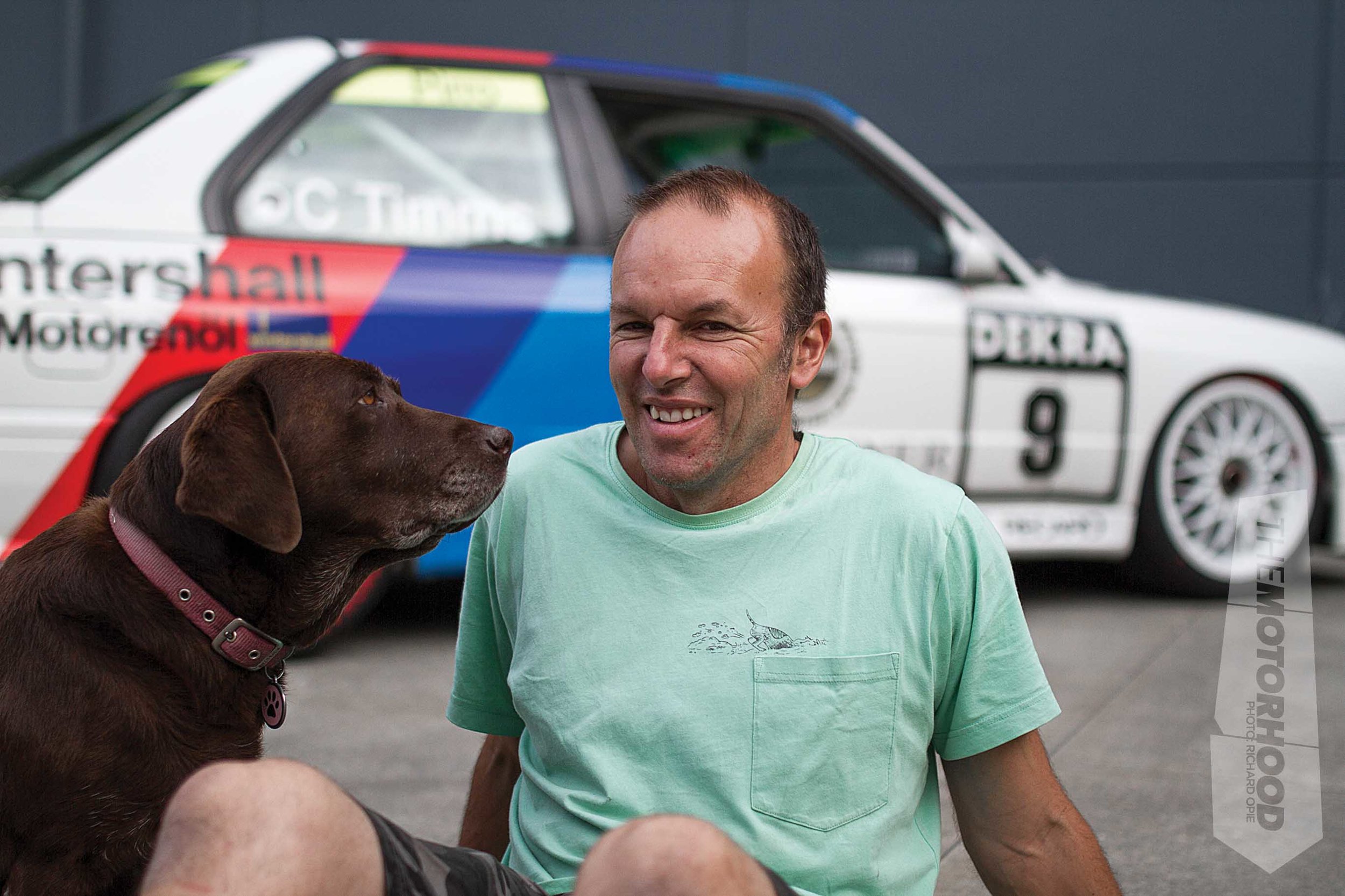
Driver profile
- Driver/owner: Conrad Timms
- Age: 47
- Location: Auckland
- Occupation: Company owner/race-car fabricator
- Build time: Eight months
- Length of ownership: Seven years
This article originally featured in NZ Performance Car Issue No. 236. You can grab yourself a print copy or a digital copy below:
